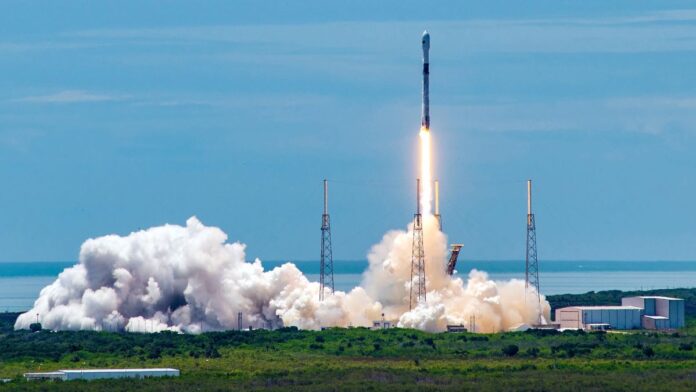SpaceX plans to launch two orbital missions less than nine hours apart on Friday (Feb. 17), and you can watch the back-to-back action live.
The first flight, scheduled to lift off from California’s Vandenberg Space Force Base at 2:12 p.m. EST (1912 GMT), will send 51 of SpaceX’s Starlink internet satellites skyward atop a Falcon 9 rocket.
Then, at 10:59 p.m. EST (0359 GMT on Feb. 18), another Falcon 9 is slated to launch from Cape Canaveral Space Force Station in Florida, carrying the I-6 F2 spacecraft aloft for British telecom company Inmarsat.
You can watch both launches live here at Space.com, courtesy of SpaceX, or directly via the company (opens in new tab). Coverage of the Starlink mission is expected to begin about five minutes before liftoff, whereas SpaceX’s stream will start about 15 minutes prior to launch of Inmarsat’s I-6 F2 spacecraft.
Related: 8 ways that SpaceX has transformed spaceflight
Both missions will feature landing attempts by Falcon 9 first stages on SpaceX droneships, which will be stationed at sea a few hundred miles from the launch sites.
The booster flying the Starlink batch has eight liftoffs and landings under its belt already, whereas the Falcon 9 launching Inmarsat’s I-6 F2 has flown just two missions to date, SpaceX wrote in descriptions of the upcoming missions.
Both landings on Friday will occur about 8 minutes and 40 seconds after liftoff. But the flight times will be different for the rockets’ upper stages: All 51 Starlink satellites are scheduled to deploy 15.5 minutes after launch, whereas I-6 F2 will deploy at about T+32 minutes.
The Starlink launch will continue to build out SpaceX’s huge and ever-growing broadband megaconstellation, which already consists of more than 3,500 operational satellites (opens in new tab) in low Earth orbit.
The roughly 12,000-pound (5,500 kilograms) I-6 F2 is headed for geostationary orbit, about 22,200 miles (35,700 kilometers) above Earth. It will provide connectivity for ships and aircraft in the Atlantic Ocean region, according to Inmarsat (opens in new tab).
I-6 F2 will be the second of two I-6 satellites to reach orbit. The other, I-6 F1, launched atop a Japanese H-IIA rocket in December 2021 and currently services the Indian Ocean region.
Friday’s planned doubleheader, impressive though it is, will not set a SpaceX record for shortest time between launches. On Oct. 5, 2022, the company launched the Crew-5 astronaut mission to the space station and a batch of Starlinks a little over seven hours apart.
Mike Wall is the author of “Out There (opens in new tab)” (Grand Central Publishing, 2018; illustrated by Karl Tate), a book about the search for alien life. Follow him on Twitter @michaeldwall (opens in new tab). Follow us on Twitter @Spacedotcom (opens in new tab) or Facebook (opens in new tab).

